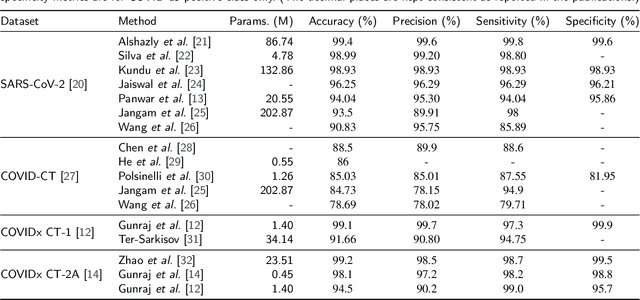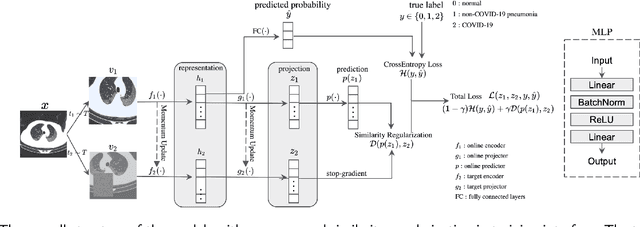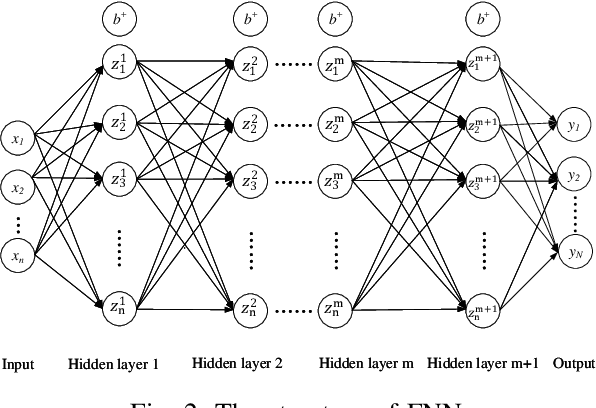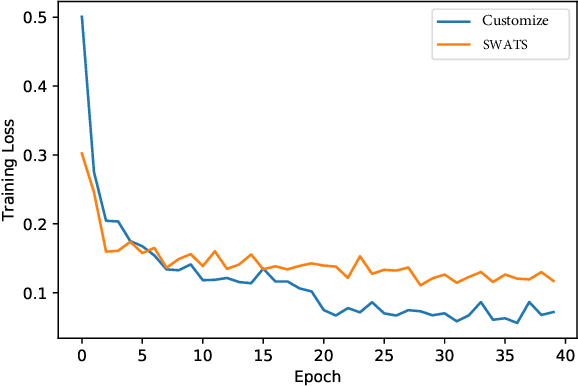Guangyu Jia
Improving COVID-19 CT Classification of CNNs by Learning Parameter-Efficient Representation
Aug 09, 2022



Abstract:COVID-19 pandemic continues to spread rapidly over the world and causes a tremendous crisis in global human health and the economy. Its early detection and diagnosis are crucial for controlling the further spread. Many deep learning-based methods have been proposed to assist clinicians in automatic COVID-19 diagnosis based on computed tomography imaging. However, challenges still remain, including low data diversity in existing datasets, and unsatisfied detection resulting from insufficient accuracy and sensitivity of deep learning models. To enhance the data diversity, we design augmentation techniques of incremental levels and apply them to the largest open-access benchmark dataset, COVIDx CT-2A. Meanwhile, similarity regularization (SR) derived from contrastive learning is proposed in this study to enable CNNs to learn more parameter-efficient representations, thus improving the accuracy and sensitivity of CNNs. The results on seven commonly used CNNs demonstrate that CNN performance can be improved stably through applying the designed augmentation and SR techniques. In particular, DenseNet121 with SR achieves an average test accuracy of 99.44% in three trials for three-category classification, including normal, non-COVID-19 pneumonia, and COVID-19 pneumonia. And the achieved precision, sensitivity, and specificity for the COVID-19 pneumonia category are 98.40%, 99.59%, and 99.50%, respectively. These statistics suggest that our method has surpassed the existing state-of-the-art methods on the COVIDx CT-2A dataset.
Channel Assignment in Uplink Wireless Communication using Machine Learning Approach
Jan 12, 2020



Abstract:This letter investigates a channel assignment problem in uplink wireless communication systems. Our goal is to maximize the sum rate of all users subject to integer channel assignment constraints. A convex optimization based algorithm is provided to obtain the optimal channel assignment, where the closed-form solution is obtained in each step. Due to high computational complexity in the convex optimization based algorithm, machine learning approaches are employed to obtain computational efficient solutions. More specifically, the data are generated by using convex optimization based algorithm and the original problem is converted to a regression problem which is addressed by the integration of convolutional neural networks (CNNs), feed-forward neural networks (FNNs), random forest and gated recurrent unit networks (GRUs). The results demonstrate that the machine learning method largely reduces the computation time with slightly compromising of prediction accuracy.
 Add to Chrome
Add to Chrome Add to Firefox
Add to Firefox Add to Edge
Add to Edge